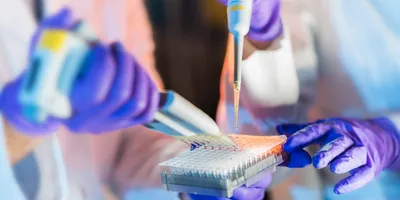Introduction: Why Environmental Monitoring Matters in Pharma Cleanrooms
Environmental monitoring (EM) is the backbone of cleanroom control in pharmaceutical manufacturing. For lab managers, QA/QC leads, and scientific staff, it ensures that the environment where products are manufactured, tested, and stored adheres to strict contamination control standards. Failure in this critical area can compromise product quality, delay batch release, and trigger regulatory scrutiny.
As regulatory requirements grow more stringent, maintaining a robust environmental monitoring program has become essential not only for compliance but also for upholding product safety and manufacturing efficiency. This article explores core principles, tools, and strategies for successful environmental monitoring tailored to pharmaceutical cleanrooms.
Environmental Monitoring in Pharma Cleanrooms: Basic Principles
Environmental Monitoring (EM) refers to the systematic collection and analysis of data related to the microbiological and particulate quality of cleanroom air and surfaces. It supports aseptic processing by identifying contamination risks in critical environments.
Key elements include:
- Viable Monitoring: Detects living microorganisms (e.g., bacteria, fungi).
- Non-Viable Monitoring: Measures particles (≥0.5 µm and ≥5.0 µm) in cleanroom air.
- Surface Sampling: Includes swabs and contact plates for equipment and personnel surfaces.
- Compressed Gases and Water Systems: Often monitored for microbial and endotoxin content.
Purpose of EM in Cleanrooms:
- Detect environmental contaminants before they affect product quality.
- Support root cause analysis of deviations and Out-of-Specification (OOS) results.
- Enable data trending to prevent recurrence and maintain control.
To deepen your understanding of managing unexpected test results, review Managing Out-of-Specification (OOS) Results.
Cleanroom Monitoring Regulations and Compliance Requirements
Cleanroom environmental monitoring must align with regulations set by authorities such as:
- FDA (21 CFR Parts 210, 211)
- EU GMP Annex 1
- ISO 14644-1 and -2 (Cleanroom classification and monitoring)
Cleanroom Grades (EU GMP Annex 1):
Grade | Airborne Particulate Limits (≥0.5 µm) | Typical Use Case |
A | 3,520 particles/m³ | Aseptic filling |
B | 35,200 particles/m³ | Background to Grade A |
C | 352,000 particles/m³ | Preparation stage |
D | 3,520,000 particles/m³ | Bulk product handling |
EM Requirements per Cleanroom Grade:
- Grade A/B: Continuous particle monitoring and frequent microbial sampling.
- Grade C/D: Periodic, risk-based monitoring based on process exposure and criticality.
To further strengthen your quality system, consult Introduction to Pharmaceutical Quality Assurance.
Key Methods and Tools for Environmental Monitoring in Cleanrooms
To ensure a comprehensive EM program, labs need to employ a blend of techniques, technologies, and documentation protocols.
1. Airborne Particle Counting
- Used for non-viable monitoring with portable or fixed particle counters.
- Complies with ISO 14644 and GMP Annex 1.
- Offers real-time data and alerts for excursions.
2. Microbial Air Sampling
- Active air samplers draw a set volume over a growth medium (e.g., agar).
- Passive methods (settle plates) are also used but less quantitatively.
- Incubated for bacterial/fungal growth and colony-forming units (CFU) are counted.
3. Surface Monitoring
- Contact plates and swabs are used on equipment, walls, floors, and personnel garments.
- Locations should be strategically selected based on risk (e.g., near aseptic fills).
4. Compressed Gas and Utility Testing
- Viable and non-viable tests ensure process gases and water are free from contamination.
5. Data Management Software
- EM software tracks sample points, schedules, excursions, and trends.
- Integration with Batch Record Review Best Practices in Pharma Manufacturing ensures comprehensive quality tracking.
Implementing a Risk-Based Environmental Monitoring Strategy
Traditional EM programs often follow rigid schedules, but regulators now advocate for risk-based monitoring, focusing on areas with higher contamination probability.
Key Risk-Based Considerations:
- Product risk: Sterile injectables vs. oral tablets.
- Process risk: Open vs. closed processing systems.
- Historical data: Trending excursions or microbial spikes.
- Personnel traffic: High-touch areas and gowning zones.
Risk-based strategies can optimize sampling frequency and resource allocation without compromising safety. For a deeper dive, see Risk-Based Quality Management (RBQM) in Pharmaceuticals.
Environmental Monitoring Implementation Guide for Lab Managers
Implementing or upgrading your EM program requires structured planning and a proactive mindset. Use this roadmap to assess your facility's preparedness and ensure that every critical aspect of your monitoring strategy is addressed.
Environmental Monitoring Checklist
1. Program Design:
- Establish cleanroom classifications and designate corresponding environmental requirements (e.g., Grade A for aseptic filling).
- Define critical control points and zones, mapping workflows to pinpoint high-risk areas.
- Example: Identify and prioritize monitoring around open vial filling stations.
2. Sampling Plan
- Develop a schedule for viable and non-viable sampling based on risk, cleanroom classification, and product type.
- Clearly define sample types (air, surface, personnel) and assign sampling frequencies.
- Example: Use active air samplers for 1,000 liters per sample in Grade A areas daily, while passive settle plates are deployed weekly in Grade D zones.
3. Data Management:
- Use electronic data systems to log, trend, and alert on EM results.
- Ensure real-time access to excursion data and support for deviation investigations.
- Example: A trending alert for three consecutive action limit breaches at a Grade B workstation triggers an immediate root cause analysis.
4. Personnel Training:
- Train staff on aseptic behavior, gowning qualifications, and contamination prevention.
- Conduct periodic assessments and visual observations of cleanroom behavior.
- Example: Quarterly gowning requalification tests and training on proper glove disinfection techniques.
5. Audit Readiness:
- Maintain comprehensive records of EM protocols, trend reports, deviation logs, and Corrective and Preventive Actions (CAPA) documentation.
- Prepare cross-referenced data for batch records and investigations.
- Example: Keep audit-ready logs of each excursion with linked CAPA outcomes and associated batch records for seamless traceability.
Conclusion: A Monitoring Program That Drives Quality and Innovation
Environmental monitoring for cleanrooms in pharmaceutical manufacturing is more than a compliance activity—it’s a strategic tool for ensuring consistent product quality, protecting patients, and reducing costly deviations. Lab managers who proactively build risk-based, audit-ready EM programs position their facilities for success amid tightening regulatory landscapes.
A well-executed EM program feeds into broader quality systems, such as those managing Stability Chambers and Conditions for Drug Storage, batch record integrity, and OOS investigations. For any pharmaceutical lab aiming to lead in innovation and compliance, mastering environmental monitoring is a vital step forward.
FAQ: Environmental Monitoring in Pharma Cleanrooms
What is the purpose of environmental monitoring in cleanrooms?
Environmental monitoring ensures that pharmaceutical cleanrooms maintain controlled levels of particulates and microbes. It safeguards product integrity and supports regulatory compliance by detecting and addressing contamination risks early.
How often should environmental monitoring be conducted in pharma cleanrooms?
The frequency depends on cleanroom classification and risk assessment. Grade A/B zones often require continuous particle monitoring and daily microbial testing, while Grade C/D zones may follow periodic schedules based on process criticality.
Which regulations govern environmental monitoring in pharmaceutical manufacturing?
Key regulations include the FDA's 21 CFR Parts 210/211, EU GMP Annex 1, and ISO 14644 standards. These provide guidance on classification, monitoring frequencies, and data interpretation.
Lab Safety Management Certificate
The Lab Safety Management certificate is more than training—it’s a professional advantage.
Gain critical skills and IACET-approved CEUs that make a measurable difference.
What tools are essential for effective environmental monitoring?
A robust EM program includes particle counters, microbial air samplers, surface sampling kits, and data management systems to track trends and deviations effectively.
Further Resources
- FDA Guidance for Industry: Sterile Drug Products Produced by Aseptic Processing
- ISO 14644 Standards Overview













